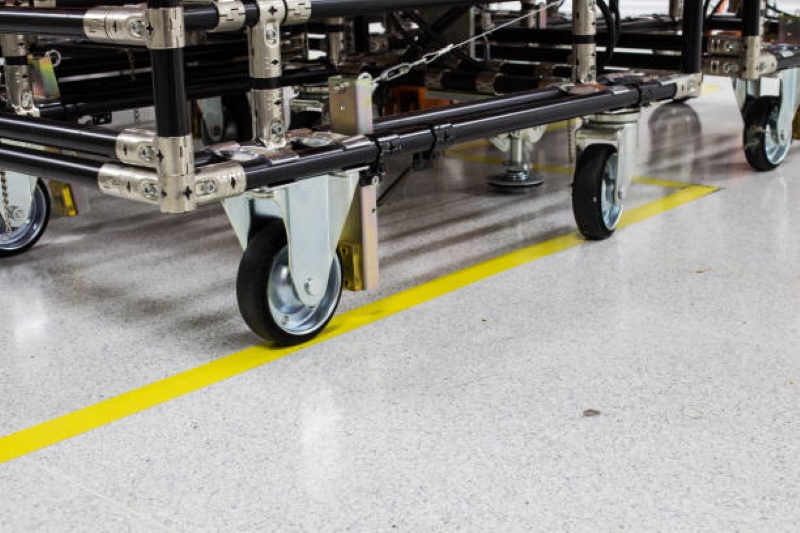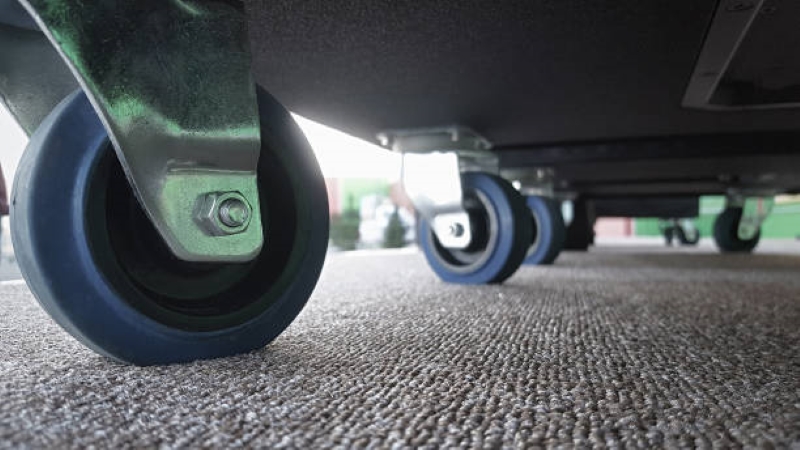For the longest time, wheels were made of either wood or stone and rolled as if they were being pushed by an ant up a bumpy hill. Today's wheels have changed quite a bit from the original since they are used in many different applications.
One of these wheels are casters which allow any object be it a furniture piece or trolley to move in any direction. These small wheels make use of a versatile mounting rig and bearings that let it roll freely so that when you need to move a trolley you only do so with a little bit of effort. Casters also come made of different materials with one of the most popular ones being made of rubber.
What Matters in a Rubber Caster
Diameter
While not the most important factor, the diameter or size of rubber casters matters as much as the rest of its features. The larger the wheels the more comfortable they are when going over bumps. Small rubber wheels for trolley are more suitable when you want more maneuverability and they also make it easy to start moving.
Tread
You can get rubber casters with either a pattern tread or a smooth one. The former is better for heavy-duty trolleys since it allows you to move heavier loads without losing control over them. Casters with a smooth tread are best for indoor surfaces that are smooth as they are quiet.
Capacity
The load capacity of rubber wheels is what will allow you to carry heavy loads together with the capacity of your trolley. A higher load capacity means you can move heavier items. Just make sure that your trolley can take the same weight too.
Mounting
Industrial rubber wheels come with either a bolt hole or a plate mount rig. The former is ideal when you want to get a more precise placement of the casters. The latter is a more secure and stable solution that is made for dealing with heavy loads.
Brakes
Casters can also have brakes on them which is crucial if you're going to move heavy items up and down steep surfaces. The brakes on trolley casters work in a similar way as the ones on a kick scooter.
Swivel vs Rigid
You can get casters as either rigid or swivel units. Rigid casters are a great solution if you only need to go backward and forward with your trolley, especially with heavy items. Swivel rubber wheels for trolley are able to turn 360° which means you can move your trolley in any direction.
Types of Rubber Casters
Soft
Soft rubber casters are made of well, soft rubber that's been moulded and then bonded to a core made of hard rubber. This makes soft rubber casters suitable for wet and steamy conditions and can fare well against mild chemicals and extremely low temperatures.
Hard
A hard caster wheel is a one-piece moulded rubber which makes these casters bear more weight than soft casters. Hard rubber casters are resistant to the same chemicals and environmental conditions as soft rubber casters but they are not non-marking. The hardness level of hard rubber wheels varies between 70D and 80D.
TPR
Although TPR rubber casters have a hardness level of 75A they are able to withstand the same factors as both soft and hard rubber casters. TPR or thermoplastic rubber casters are able to provide both a much smoother and more cushioned ride while being non-conductive and non-marking. This makes them ideal in quiet environments.
Solid
Solid rubber wheels have nothing but rubber inside them and this makes them quite durable and most suitable for heavy-duty applications. However, they are not suitable for quiet environments or delicate floors.
Pneumatic
With pneumatic industrial rubber wheels you get air inside that makes them more shock absorbent and smoother over bumpy floors than solid rubber wheels. Pneumatic casters are more fitting for delicate loads than floors.
Maintenance of Rubber Casters
Clean
Although it's rubber casters we're talking about you should clean them regularly in order to keep them free of dirt, debris and dust. These particles can collect not just on the wheels but also on the axles. This is the first step towards long-lasting rubber wheels.
Inspect
Rubber might be a tough material but it's still no match to everyday wear and tear. This is why you should check your industrial rubber wheels for damage, degradation and wear. You should also peel your eyes for any cracks and flat spots as this signifies more serious damage where replacement is a must.
Adjust
In the same way, you check your vehicle's alignment and adjust the wheels, you should do the same with your trolley's casters. With proper alignment, the wheels won't wear out unevenly and you won't have an unstable trolley to begin with. This can also be bad for the bearings.
Lubrication
Talking about bearings, you should lubricate them from time to time with a silicone-based lubricant. You can also use grease, just make sure that the manufacturer has specified it first.